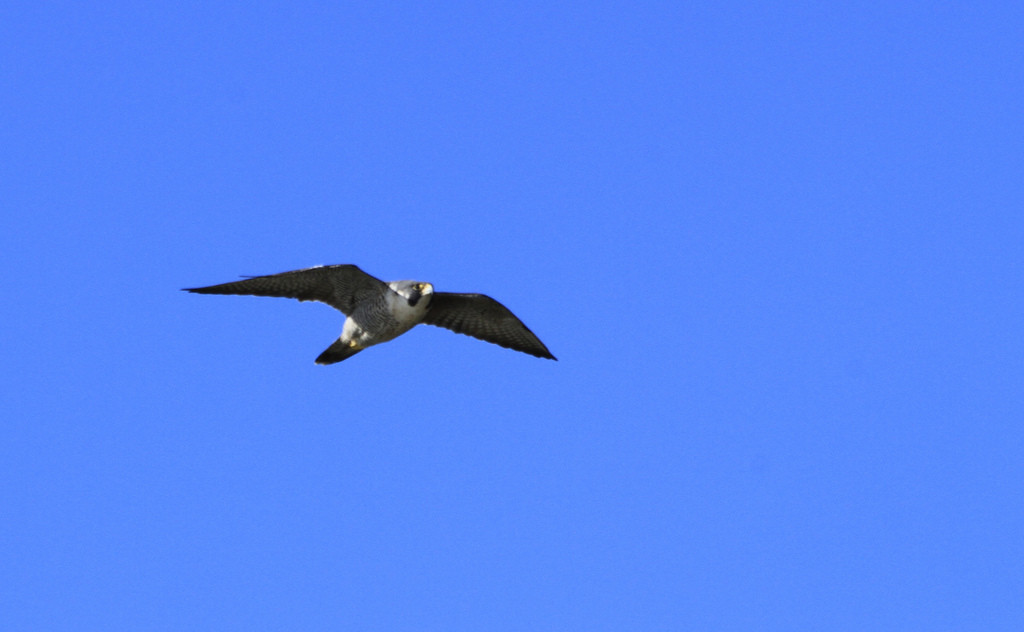Do you know how to identify a peregrine in flight?
Last week I asked if you could all keep an eye out for peregrine falcons, and being the fastest creature on the planet you may find that a tall order! However they don’t fly over 200mph all the time, only when they are stooping to catch their prey. For anyone who isn’t sure about how to identify peregrine falcons in flight, I thought I would give a short overview.

They are the strongest of falcons in relation to their size with a bulky body and ‘heavy chest’. Pointed wings are slightly flexed and with a medium length tail compared to other bird of prey species. They have an active flight with fairly quick, shallow wing beats and a moderate speed. When they spot their prey, the magic happens – wing action becomes more determined and speed suddenly increases until they stoop, dropping like a bullet onto their unsuspecting victim. It is also worth noting that sparrowhawks also stoop but more vertically compared to a peregrine which stoops more diagonally.
Peregrines are mostly silent away from their breeding site. At this time of year you would only usually see one at a time unless you were near a nest. Then you could potentially spot three – a pair defending their territory against an intruder and this could get quite vocal.
Peregrines have a dark moustache which can be seen even with the naked eye. Different peregrines have slightly different moustaches so they can be individually identified. Juveniles have a streaked breast and belly whereas an adults is barred and females are much larger than the males. I would also recommend watching a few videos online of peregrines in flight. If a bird of prey comes into your garden and takes a bird from your feeders it will almost certainly be a sparrowhawk.
Laura Preston – Scottish Wildlife Trust, Falls of Clyde Ranger
Help support our vital work and join us today!
Help protect Scotland’s wildlife
Our work to save Scotland’s wildlife is made possible thanks to the generosity of our members and supporters.
Join today from just £3 a month to help protect the species you love.
Preface
Last week I asked if you could all keep an eye out for peregrine falcons, and being the fastest creature on the planet you may find that a tall order! …
